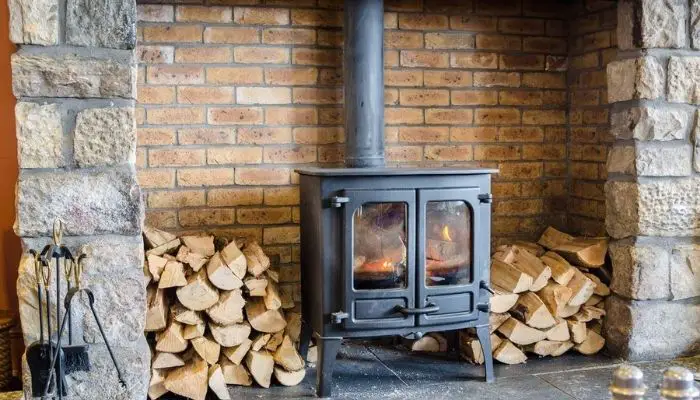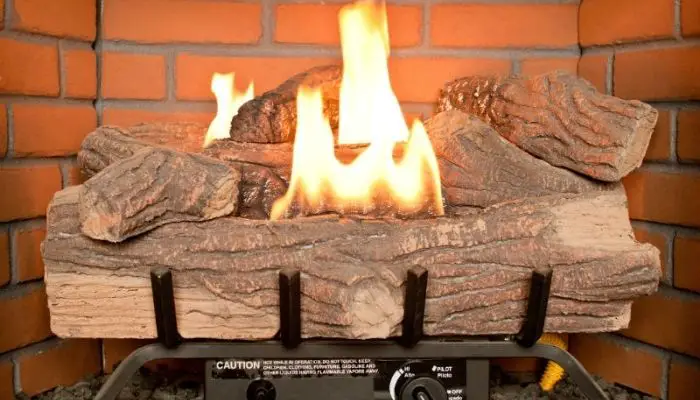This is a question that requires you to get a clear comparison between wood-burning stoves and fireplaces. Both of these home appliances have one ultimate purpose: to warm up your home. But what makes one better than the other. There are three main types of fireplaces; for this comparison, we shall focus on the wood-burning fireplaces.
A wood-burning fireplace is a ventilated structure constructed with fire-resistant material to contain a fire from burning wood. The confined space is called the firebox, and here is where all the magic happens. The firebox is connected to the chimney to allow fumes and smoke to escape outside.
The wood-burning stove is a huge metallic container with doors and a pipe that acts as the chimney. The container space is where you burn wood to produce heat. Some designs have a space on the top that you can use to cook. Now you can see the difference is in the structure, and one is constructed while the stove is a pre-fabricated device.
We have to look at a few determining factors to get which one is better. Cost, safety, eco-friendliness, efficiency, and beauty/aesthetics are five determining factors. You should note that these factors depend on each other. You will get a concluding remark at the end of each factor discussion.
Differentiating Factors That Will Determine the Best Heating Appliance
- Cost
It can cost you about $2,000 to $30,000 to construct a perfect wood-burning fireplace. However, the type of material you will use can also increase the cost. Labor costs can also be a tricky thing during the construction process.
A wood-burning stove can cost $1500 to $5000 to install. The size of the stove and the design are what influence the cost. Sometimes, installing the ventilation system and labor rates can exaggerate the cost.
Remark: you can see that the fireplace is very expensive to construct and maintain than the stove. Experts say constructing the chimney is what increases the cost of the fireplace.
2. Safety
Wood burning fireplaces are open combustion units where you do not have a door in front of the firebox. This is somehow dangerous because flying embers can easily land on flammable material in your home. On the other hand, the stove has glass doors that contain all sparks and embers in the firebox.
The wood-burning fireplace is too open hence very dangerous for young children and pets. They can easily wander into the open fire. A wood-burning stove is a closed unit that offers a sense of protection to young children and pets. But do not leave children and pets unattended near the stove because the glass door also gets hot.
Professionals in the heating industry say that wood-burning fireplaces do not get complete burning of wood fuel. This condition leads to a build-up of creosote in the chimney and firebox. Creosote is a big fire hazard in many homes. The stove has closed doors that create room for the complete combustion of wood fuel.
Remark: the stove is safer than the fireplace
3. Beauty and aesthetics
A wood-burning fireplace can make your home excellent with the perfect masonry designs. Some of the construction materials, like mosaic tiles and marbles, will make it sparkle. The fireplace hearth and the open flames can make the room a centerpiece. The open orange flame and natural smell of wood on fire will make you relax.
Wood-burning stoves are also not left behind. They come in different designs and styles that make you feel at home. Some manufacturers use the traditional styles while others use modern designs. Some even go ahead and combine both traditional and contemporary designs.
Remark: wood-burning fireplace is better than a wood stove in this case. It has a natural ambiance that is lacking in the stove.
4. Efficiency
First of all, being efficient is when you achieve the highest production with the lowest loss of effort and expense. Research shows that the open combustion in fireplaces allows most heat to escape through the chimney. Statistics show that only 10% of the heat released is used in the room; 90% goes out through the chimney.
Wood burning stoves use a closed combustion system that restricts the amount of heat that goes out through the chimney. It will give off more heat with a little amount of wood. It can take about three hours before you add wood to the firebox.
Remark: more heat with little wood, then the stove is the best in this case.
5. Eco-friendly
This factor highly depends on the “Efficiency” factor above. Eco-friendly means something is not harmful to the environment. These heating appliances produce fumes dangerous to the environment, but one produces more than the other.
Wood-burning fireplaces use the open combustion technique that produces more fumes than closed combustion in stoves. The efficiency factor shows that the stove uses less wood than the fireplace. You will save many trees when you use the stove.
Remark: the stove is more eco-friendly than the fireplace.
Conclusion
You can deduce that the wood-burning stove is better than a fireplace from the information above. Using the determining factors, we can conclude that the stove scored 4 out of 5 to be the best. However, beauty and aesthetics are vital considerations for many homeowners and have attracted many people to construct fireplaces.


